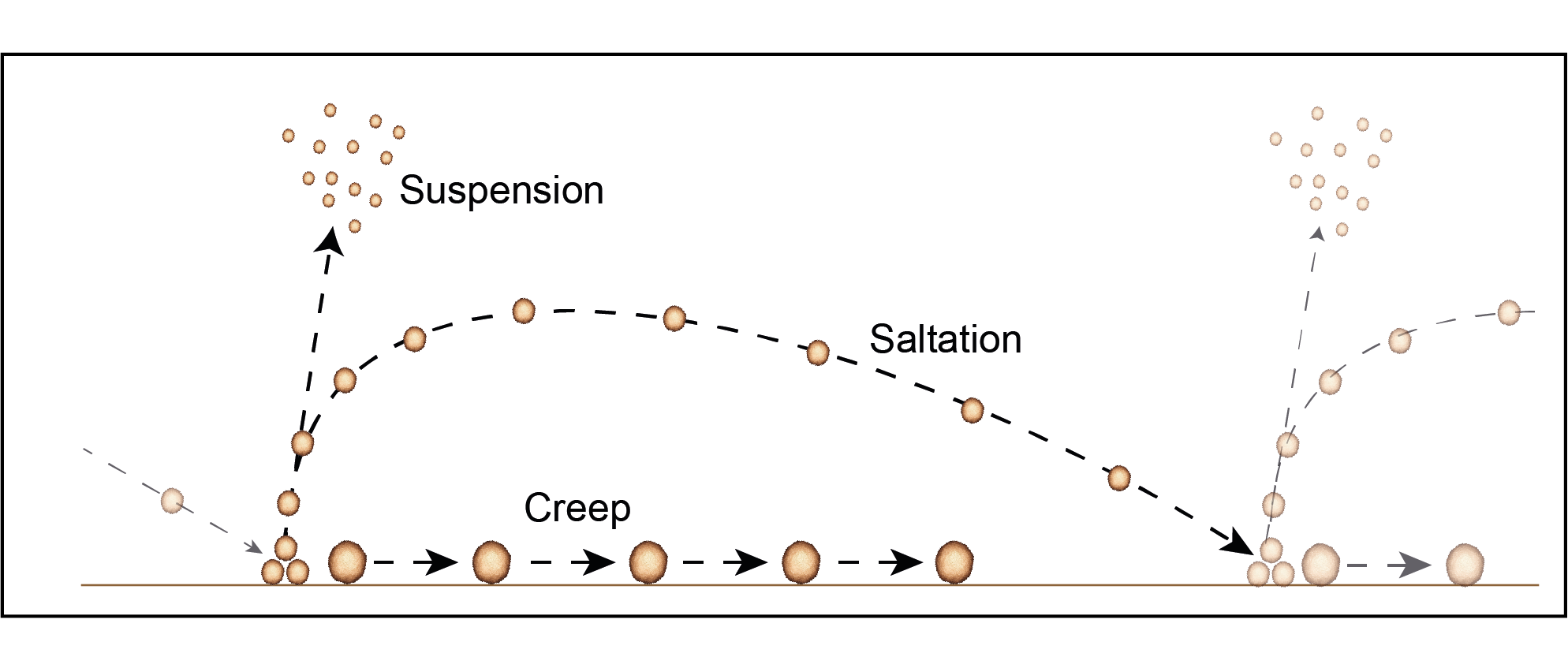Saltation
and can be transported by wind in a number of different ways according to the size of its constituant particles. Sand transport by wind is evidenced on Mars by a plethora of modern aeolian bedforms, varying in scale from centimetres to tens of metres (Balme et al., 2018). There are three primary mechanisms of granular transport: suspension, experienced by the smallest particles where the downward pull of gravity is counterbalanced by an upward movement imparted by atmospheric eddies; saltation, where particles are small enough to be lifted from the surface by the wind but return promptly, under gravity, to impact the ground (hop); and creep, where particles are too large to be removed from the surface and roll or slide along the surface due to wind drag or the impact of saltating grains (e.g. Bagnold, 1941). Importantly, slatation can result in the fracturing of the granular material leaving reactive mineral surfaces (Merrison, 2012).
 Bagnold, R. A., (1941). ‘The Physics of Wind Blown Sand and Desert Dunes’. Dover Publications.
Bagnold, R. A., (1941). ‘The Physics of Wind Blown Sand and Desert Dunes’. Dover Publications.
Balme, M., Robson, E., Barnes, R., Butcher, F., Fawdon, P., Huber, B., Ortner, T., Paar, G., Traxler, C. and Bridges, J. (2018) 'Surface-based 3D measurements of small aeolian bedforms on Mars and implications for estimating ExoMars rover traversability hazards', Planetary and Space Science, 153, pp. 39-53.
Merrison, J. (2012) 'Sand transport, erosion and granular electrification', Aeolian Research, 4, pp. 1-16.






